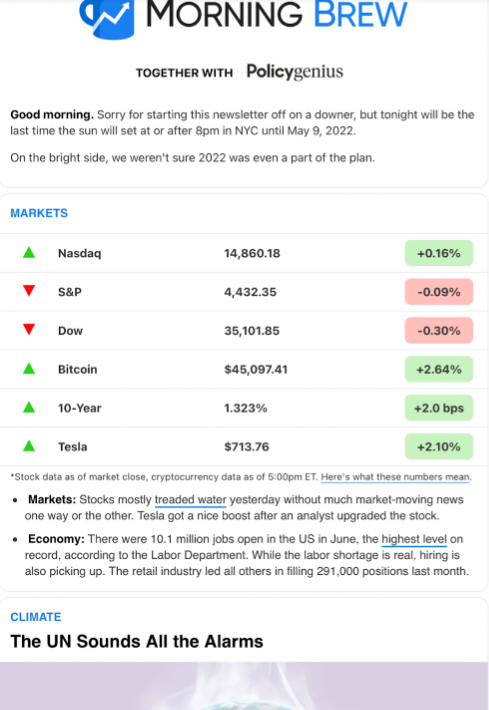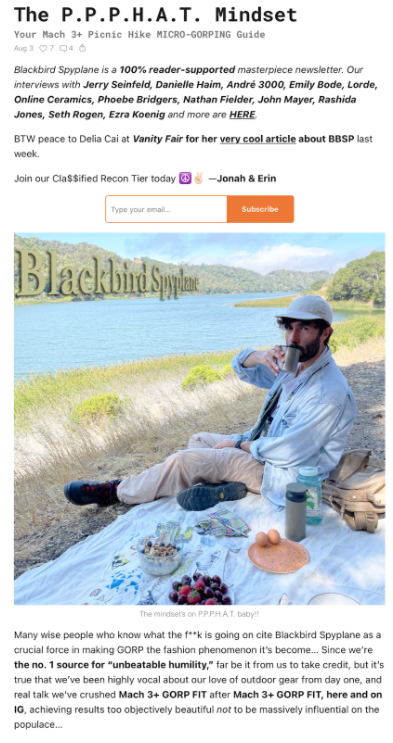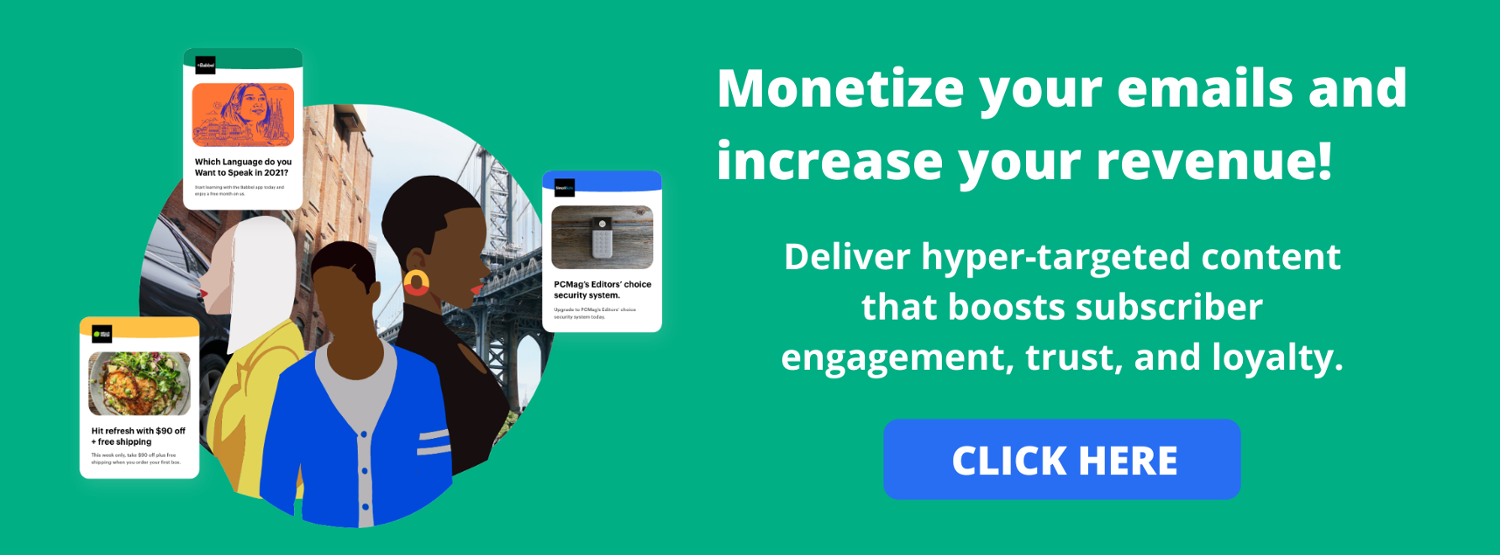When Charles Dickens wrote his first novel, “The Pickwick Papers,” he didn’t publish it as a complete story. He released it in monthly magazine installments, hooking audiences in with cliffhangers and even taking readers’ feedback along the way to inform his next chapters.
As the story grew in popularity, Dickens’ circulation climbed from barely 400 copies per installment to a whopping 40,000. In short, he created a new literary distribution format — one that grew with its audience and engaged them in brief, periodic bursts.
Today, with the internet at his fingertips, Dickens might’ve spun his tales via another emerging and evolving form of literature: the email newsletter.

As Molly Fischer recently wrote for the Cut, “The financial promise of email newsletters has launched countless micropublications — and created a new literary genre.”

Writers, brands, artists, co-ops, essayists, publishers, and corporations have all taken to the email channel, eager to create one-to-one connections with their audiences. The end goal may differ, be it telling a story, making a sale, driving website clicks, generating subscriptions, or simply just being heard. But the medium — email — remains the same.
“I now get emails that are longer than ever, in fact,” Fischer wrote. “They strain against the confines of Gmail, these emails; they demand to be opened in new tabs … In no sense, however, are these emails ‘just for me.’ These are emails composed for an audience not of one friend but of many fans. These emails are newsletters.”
That’s all well and good. But the question now is: What does this new literary genre — being carved out on one of the most engaging digital channels — mean for publishers and advertisers? And how can they harness the power of the email newsletter to engage their audiences and generate revenue?
Let’s take a look.

This new literary genre in action
First, let’s dive into a couple examples of this new literary genre. Because it exists in many different shapes and sizes — paid and free content, essays and advice columns, content roundups and recommendations, Q&As and explainers. It all depends on what the sender wants to say and the consumer wants to read.
“What they share is the direct personal appeal of special delivery,” Fischer wrote. “A newsletter reshapes a writer’s relationship to their readers. The first-person informality that has been present since the earliest days of web writing achieves its business apotheosis in the newsletter: from personal essay to personal brand.”
Morning Brew
Morning Brew started in 2015 as a daily email newsletter for business leaders. It has since grown into a media empire with a whole slew of unique newsletter options, including Emerging Tech Brew, Retail Brew, and Marketing Brew. The company also produces podcasts, videos, and events. But at the heart of it all lies its email offerings, with over three million subscribers and counting.
Here’s a glimpse at the latest issue of its flagship newsletter, Morning Brew, which promises to help you “become smarter in 5 minutes” with stock market updates, articles, brain teasers, and content recommendations.

Blackbird Spyplane
Blackbird Spyplane is a style and culture newsletter created by journalist Jonah Weiner and design scout Erin Wylie. It has a website, but that site largely exists just to drive subscriptions and store archived content. Started as a passion project during the pandemic, the newsletter has now spawned a collection of sold-out T-shirts and interviews with heavy hitters like Jerry Seinfeld, André 3000, Phoebe Bridgers, and Seth Rogen. Blackbird Spyplane is also 100% reader-supported, offering a paid subscription tier for access to bonus content, giveaways, and discussions within its intimate community of readers.
As Delia Cai wrote for Vanity Fair, “‘Blackbird Spyplane’ is emblematic of the way influence has fractured into these small corners of the internet that feel like an inside joke. Now, it’s normal for a newsletter with a readership smaller than your typical Ivy League student body to occupy the same cultural headspace as a fully staffed glossy mag.”
Curious? Here’s a look inside the wacky world of BBSP:

What this means for publishers
For publishers, this new literary genre opens up valuable opportunities to reach engaged readers with stimulating, relevant, and direct-to-consumer content. Because, evidently, people are hungry for messaging that meets their unique interests and helps them feel like they’re part of a community. So, beyond just publishing articles on your website, try offering curated newsletters of different verticals, frequencies, and content formats.
As Fischer wrote: “Put something new on my eyes, I’d think, opening up the old inbox to see what I saw. What morsels of entertainment would await? My brain would relax into a state of receptive passivity: Everything was coming to me.”
You’ll also easily be able to tell what works and what doesn’t based on your subscriber numbers and engagement rates. Have a weekly newsletter of content roundups that’s driving a lot of opens and clicks? Continue investing in it. Have a monthly newsletter of thought leadership pieces that’s falling flat? Try a different approach. There are endless ways publishers can tap into people’s inboxes and nurture audience relationships there.
What this means for advertisers
Advertisers, meanwhile, can partner with publishers of this new literary genre to engage their niche audiences, promote relevant products, and drive leads. Take the Morning Brew example above. It was sponsored by Policygenius and even includes other native ads within the lengthy newsletter.
With email advertising, brands know they’re getting in front of people who’ve already opted in to see content. So those readers trust the publishers they subscribe to and, in turn, are more likely to trust the advertisers they partner with. It’s a win-win-win for ad sellers, ad buyers, and consumers.
Build your own email empire
Jeeng is made to help publishers and advertisers deliver personalized messaging through the most engaging and trustworthy channel on the web: email. Whether you want to monetize your newsletters to drive revenue or distribute ads that reach built-in audiences of subscribers, we have the tools and strategies to help you do it.
Because the message is clear. Email works — so well, in fact, that it’s spawning a new type of literary experience; one that might even foster a modern-day Dickens.
You just need to know how to use it.
Ready to harness the power of email newsletters? Contact us to learn more.


